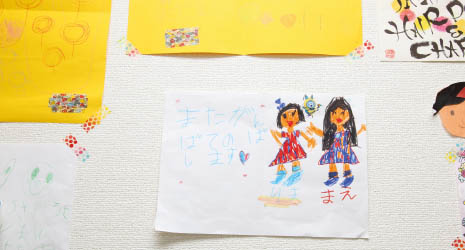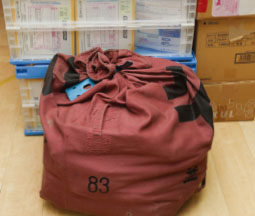Home > Highlighting JAPAN > Highlighting Japan January 2019 > Japanese NPOs Working for Change
Highlighting JAPAN


An NPO That Heals Spirits with Hair
Japan Hair Donation & Charity is the only specified nonprofit corporation in Japan that asks for hair donations and provides medical wigs free of charge to children under eighteen years old. Representative Director Kiichi Watanabe speaks about the organization’s beginnings,mission, and prospects for the future.
Kiichi Watanabe is a successful hairdresser both in Japan and abroad, and began his hair donation operation when he opened his salon in November 2008. “If we had just cut hair and made money we would have been just another ordinary hair salon,” Watanabe says. “I wanted to do something that was open to me precisely because hairdressing had been my livelihood. I decided on hair donation, which I had discovered while I was in America. It’s also a show of gratitude to the hair—recycling what would have been thrown away as trash.”
Since wigs for children are particularly expensive and hard to come by, Watanabe started the specified nonprofit corporation Japan Hair Donation & Charity (JHD&C) in September 2009. Its mission: to provide order-made wigs free of charge to children eighteen and under who suffer from illnesses such as childhood cancer and alopecia.
After this, alongside his salon work, he threw himself into seeking donations through his website and blog, recruiting cooperative enterprises, and asking for hair donations from other salons. At the time, general awareness about hair donation in Japan was low. There were only a few donations each week, and no one requested a wig during the first year.
Things changed dramatically after March 11, 2011, the day of the Great East Japan Earthquake. Confronted by this terrible reality, many Japanese people wondered if there was a way they could volunteer, and ended up donating hair. In addition, the spread of social media and donations from celebrities acted as a tailwind, and JHD&C’s activities gradually expanded.
In March 2012, the NPO handed over its first wig to a third-year high school girl undergoing treatment for childhood cancer. “She looked into the mirror while wearing the wig and said, ‘It’s been a long time since I properly looked at my own face in the mirror like this,’ with a smile,” reflects Watanabe. “That was an illustration of her difficult battle against illness at the vulnerable age of eighteen. I was deeply touched.”
Watanabe values fulfilling the wishes of the people who want to give their hair and the people who want to receive it equally. Recipients are therefore requested to send a picture when they receive and put on their wig, since the recipient’s photo gives the donor pleasure and inspires a feeling of gratitude toward the recipient.
As of December 2018, the organization had provided 306 wigs, there are over 3500 collaborating salons, and hair donation is now beginning to take root as a part of local culture. Watanabe, however, visualizes a world in which wigs are unnecessary.
“One reason that children think they need wigs is to protect themselves from the prejudice and discrimination connected to having no hair,” he states. “If our understanding of illness grows and it becomes possible to live peacefully even without hair, the act of hair donation may become unnecessary. It is my deepest wish that we achieve such a world.”
Intent on fostering a compassionate society in which everyone can live without fear of judgment or ridicule, Watanabe continues doing what he can to bring it into being.
© 2009 Cabinet Office, Government of Japan








